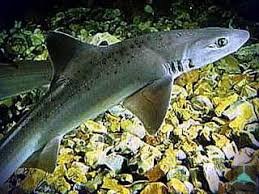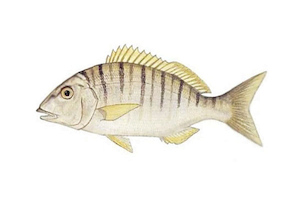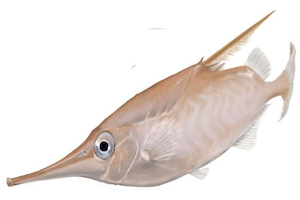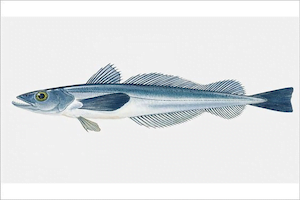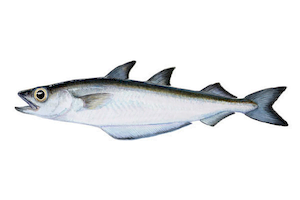Mustelus Mustelus
– Common Smooth-Hound –


| Conservation status |
|---|
 Vulnerable (IUCN 3.1) |
| Scientific classification |
Mustelus mustelus (Linnaeus, 1758)
| Kingdom: | Animalia |
| Phylum: | Chordata |
| Class: | Chondrichthyes |
| Order: | Carcharhiniformes |
| Family: | Triakidae |
| Genus: | Mustelus |
| Species: | M. mustelus |
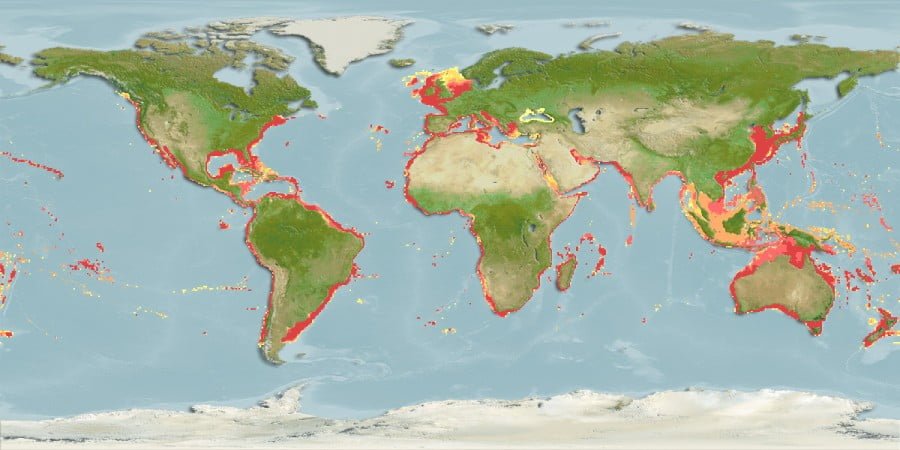
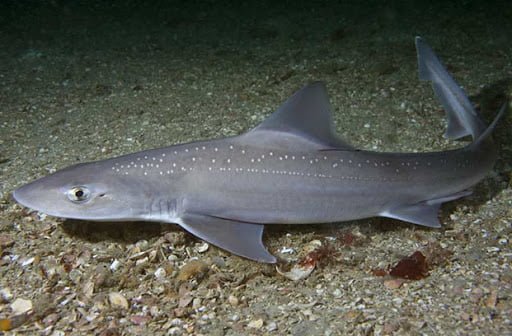
The Common Smoothhound [1] ( Mustelus mustelus ), also commonly known as the common dogfish or smooth dogfish , is a harmless shark for humans belonging to the Triakidae family .
Like other smooth hounds, the common smooth hound will aggregate in large numbers, like a pack of dogs. This is why they are called hounds.
The common smooth-hound (Mustelus mustelus) is a houndshark of the family Triakidae. It is found in the eastern Atlantic Ocean from the British Isles to South Africa, and in the Mediterranean Sea, Madeira, and the Canary Islands at depths ranging from 5 m to 625 m (although they usually stay at depths between 5-50m). While they can grow to 200 cm, their usual maximum size is 150 cm. They commonly grow to 100–120 cm with a birth length around 35 cm. The reproduction of commons smooth-hounds is viviparous.
Description
The dogfish has a uniform gray or gray-brown color on the back and white on the belly. Its length is more than two meters. It has 2 dorsal fins: the first is placed in front of the ventral , the second is located anterior to the anal . The lower lobe of the caudal fin is less developed than the upper one. It has 5 lateral gill slits , small teeth and a flattened head.
It is a moderately sized shark, rather slender, with two high dorsal fins; gray-brown with white spots not prominent on the back. Muzzle gradually rounded, with elongated and prominent nasal flaps well separated from each other and from the mouth; internal distance more than 1.4 the width of the nostrils; large, horizontally elongated eyes with strong subocular protrusions; rather prominent spiracles.
Triangular-shaped mouth, with low, small and molar-shaped teeth in each jaw, with weakly developed cusps; Prominent labial furrows with the upper ones slightly longer than the lower ones. Bucco-pharyngeal denticles occur only at the tip of the tongue and on the front of the palate. The first dorsal fin originates above the free end of the pectoral fins. Similarly shaped dorsal fins; the first high and broadly triangular, the second slightly smaller; interdorsal space between 18 and 25% of the total length; pectoral fins broad, with the anterior margins measuring between 13 and 17% of the total length.
Anal fin smaller than the second dorsal. Caudal fin strongly asymmetrical and falcate in the adults; the ventral lobe only moderately developed; well developed terminal lobe. Color from medium gray to gray brown on the back, faded to pale gray or white on the belly; absence of pronounced white speckles but occasionally sporadic brown spots appear on the back.
Distribution
This species lives on the continental shelf of the eastern Atlantic Ocean , off the British Isles and France to South Africa , including the Mediterranean Sea , the Adriatic Sea, Madeira and the Canary Islands , at depths ranging from -5 to -625. meters.
Habitat
It lives at depths ranging from 5 to 625 m (although they usually stay at a depth of 5 – 50 m). It is a kind of coastal waters usually above 150m, but has been reported up to 250m in the Mediterranean (in other places up to 350m). The dogfish frequents both coastal and offshore environments, often above the tidal levels, in the vicinity of the mouths of estuaries and in low bays with sandy, muddy or gravel substrates. Offshore, it typically frequents submerged banks and similar topologies with the same characteristics where they can gather in large numbers (see Banco dell’Avventura in the Strait of Sicily). They are usually found on or near the bottom but occasionally swim in mid-water.
Biology
Dimensions
Although they can grow up to 2m, their usual maximum size is 1m and 50cm. They commonly grow to 1m – 1m and 20cm with a birth length of about 35cm. One of the largest specimens ever recorded in the Mediterranean is a 1 m and 65 cm pregnant female with 17 embryos captured in the Adriatic on March 15, 2000.
Alimentation
The dogfish feeds mainly on crustaceans, cephalopods and herring.
Reproduction
It is viviparous, although a primitive placenta develops in pregnant females. The litters are 4-15 young (usually 10) and the gestation is 10-11 months. Females mature to around 80cm, males between 70 and 74cm.
Fishing
It is caught by trawling and used for human food, to obtain fish oil and to make animal feed .
Dangers
It is caught by trawling and used for human food, to obtain fish oil and to make animal feed.
Note
It is often confused with the starry dog which has white markings on its back. Dogfish often has faded spots which lead to misidentification. Another shark with which it is often confused is the canesca, although the common dogfish has a larger second dorsal fin. Due to the similarities between the common dogfish and other sharks, misidentification has occurred for a long time.
Nutritional traits
- Protein: 16 g
- Lipids: 1.2 g
- Calories: 80 kcal
(per 100 g of product) [2]

